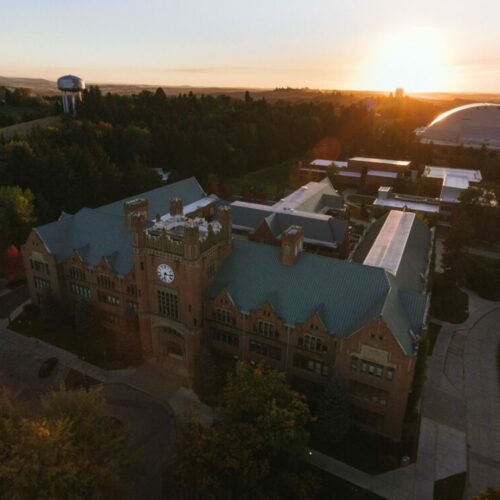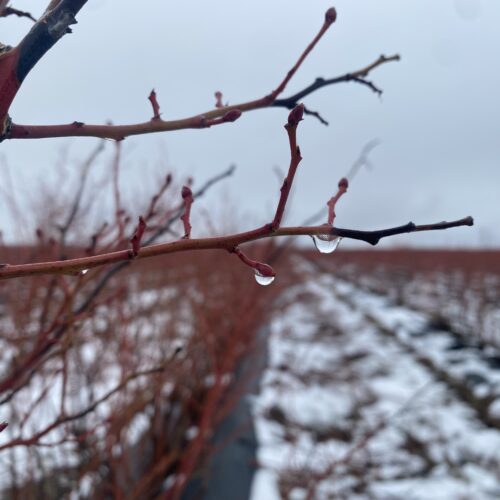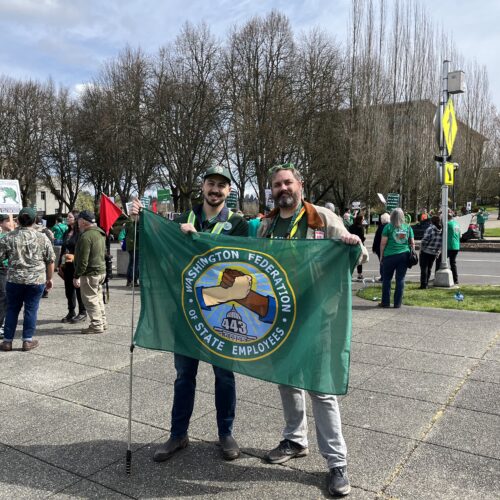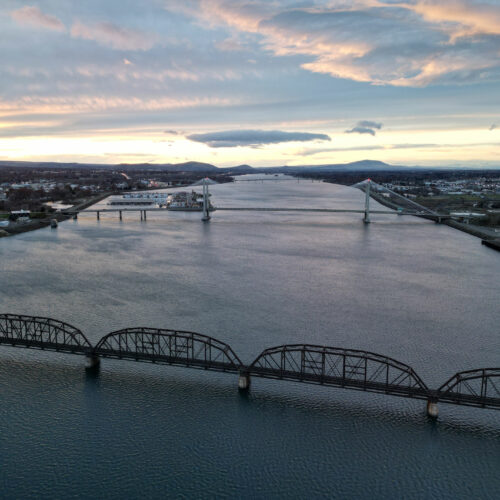
Moose spotted for the first time in Mount Rainier National Park
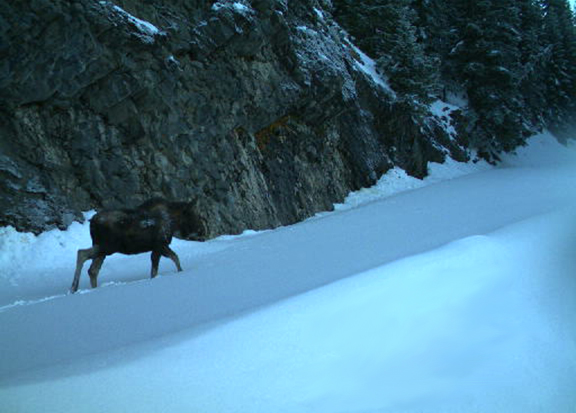
LISTEN
(Runtime: 1:05)
READ
For the first time, a moose has been captured on camera in Mount Rainier National Park. The sighting is also the first documentation of a moose in southwest Washington, according to a tweet from the national park.
Is that a MOOSE? Yes, it’s a moose!!! This is the first recorded moose sighting @MountRainierNPS & southwestern Washington! Could this be same moose recently observed on the I-90 wildlife undercrossing at Resort Creek? Check out @WSDOT’s video https://t.co/LW446Gz0Fu @WDFW -tc/pw pic.twitter.com/TxkahARNbW
— MountRainierNPS (@MountRainierNPS) December 8, 2022
The Mount Rainier moose likely wandered into southwest Washington with the help of wildlife underpasses along Interstate 90.
Since 2015, the Washington Department of Transportation estimates at least 20,000 wildlife – from bobcats to snowshoe hares, now, to moose – have used the I-90 wildlife crossings.
What might look like a bridge-to-nowhere across the Interstate at Snoqualmie Pass connects the North and South Cascades for wildlife.
I see a big-o silhouetto of a mammal,
𝗦𝗽𝗼𝘁 𝗮 𝗺𝗼𝗼𝘀𝗲, spot a moose, will you eat a native willow?
Wildlife and crossings, very, very enlightening me
Her name is Leo, call her Leo
Her name is Leo, call her Leo
Our friend Leo, caught on video – say hello#misheardlyrics pic.twitter.com/bGUrfRKZ4l— Snoqualmie Pass (@SnoqualmiePass) August 15, 2022
With urban sprawl leading to more concrete and dividing habitat, conservation groups said these types of wildlife crossings are more important than ever – both for the wildlife and for people.
“If you are in a vehicle and you hit a deer or a moose, that’s not going to be good for anybody involved,” said Andrea Wolf-Buck, spokesperson for Conservation Northwest.
In Oregon, wildlife structures on Highway 97 near Bend reduced collisions by up to 90%, according to the Oregon Department of Transportation.
“There isn’t really the option to try to keep the deer on one side of the highway or the other. They have this biological imperative that drives them from one side of the highway to the other, twice a year,” said Simon Wray, with the Oregon Department of Fish and Wildlife, in a video produced by the state.
Privately-funded underpasses on Highway 97 in Washington’s Okanogan County also have reduced collisions along a stretch of highway known for collisions with deer, although more funding is needed to complete the Safe Passage 97 project.
Beyond saving lives, wildlife crossings also can save dollars, according to a study from Washington State University. Study authors estimated each wildlife crossing could save between $235,000 to 443,000 annually, depending on the crossing structure type and location.
In addition, Wolf-Buck said, connecting wildlife habitat will be even more important as the climate changes.
“Having something like this beautiful moose show up in a new area just shows that we can still have development and humans getting the things that they need but also keeping in mind how critical it is to consider wildlife and that this is their habitat,” she said.
The Washington Department of Fish and Wildlife estimates there are around 5,000 moose in Washington. Most moose live in the northeastern part of the state, although smaller populations are found in the North Cascades, Okanogan and Blue Mountains.



